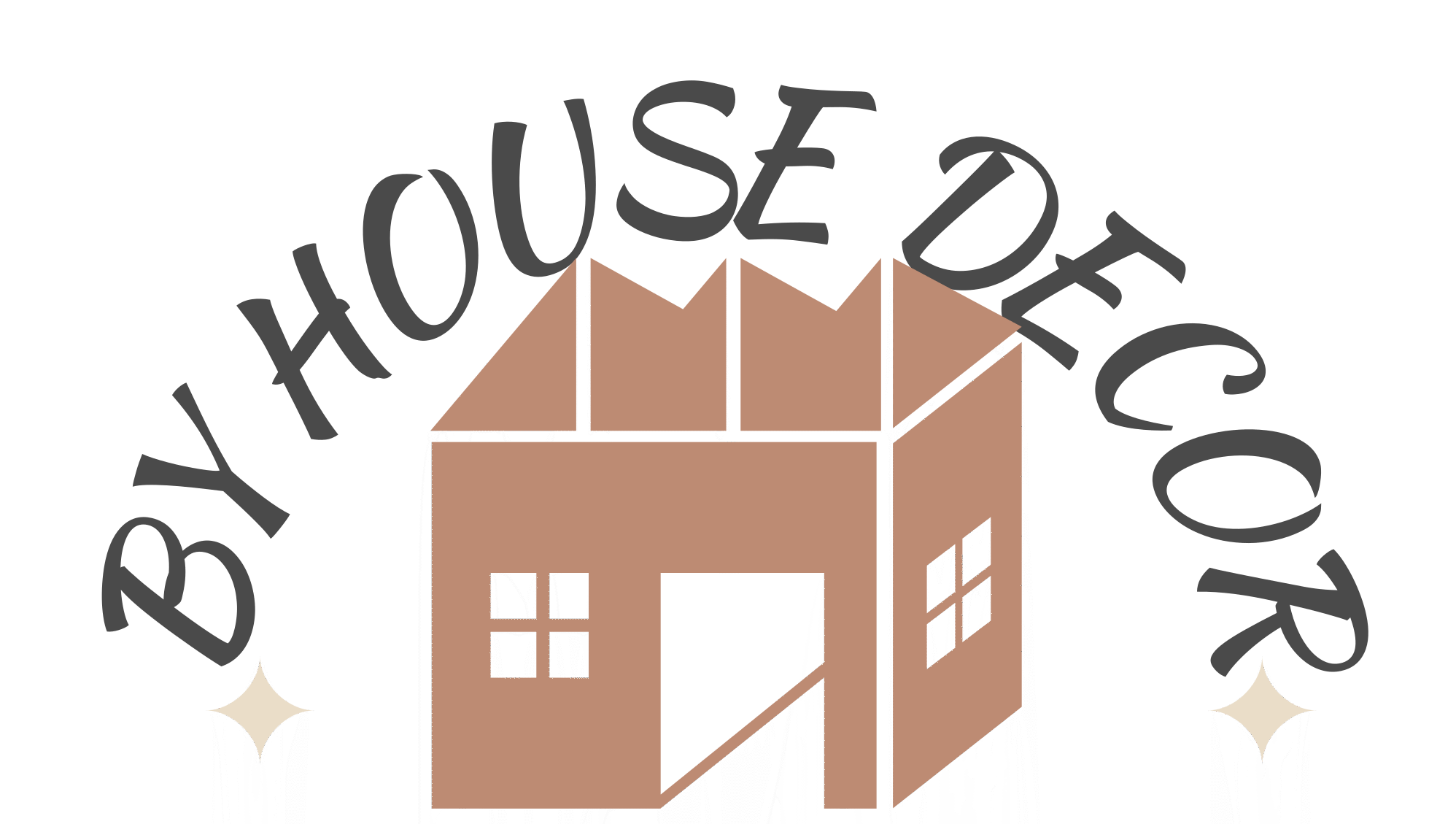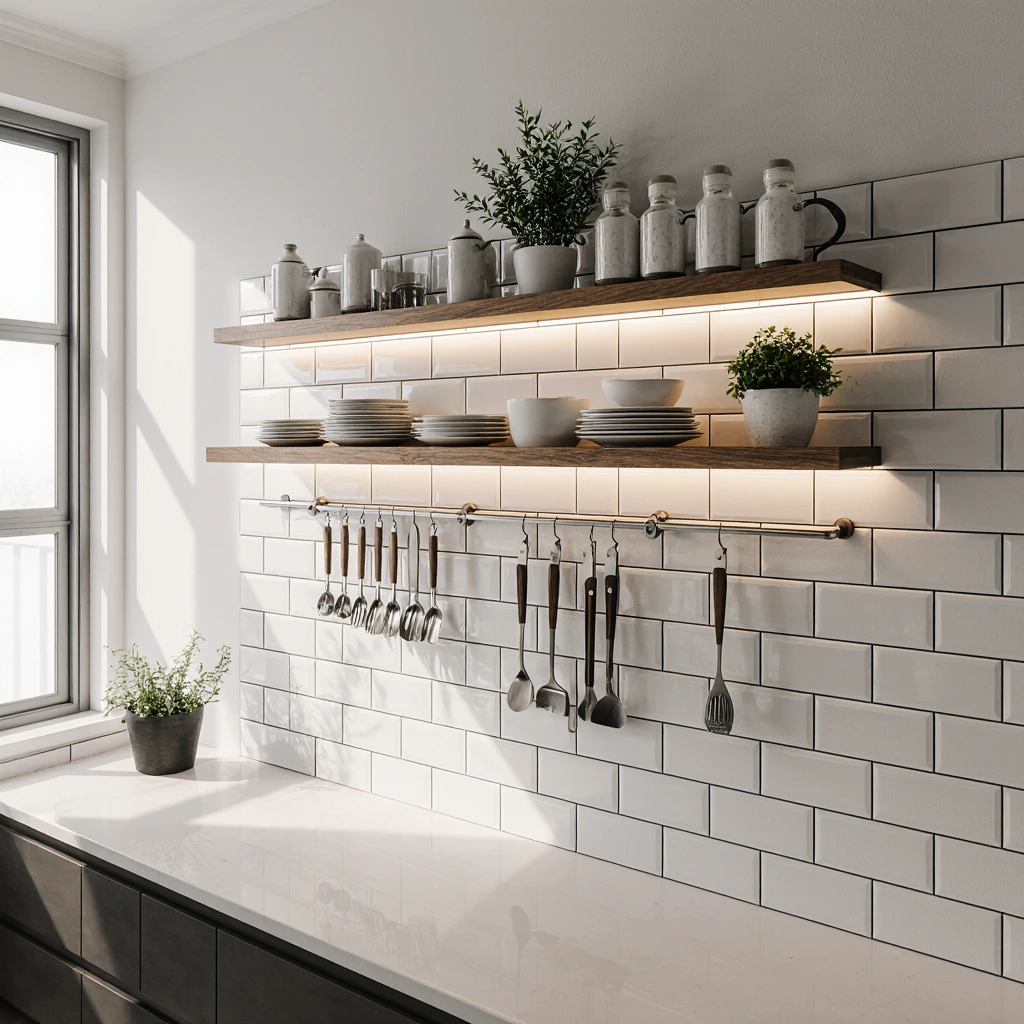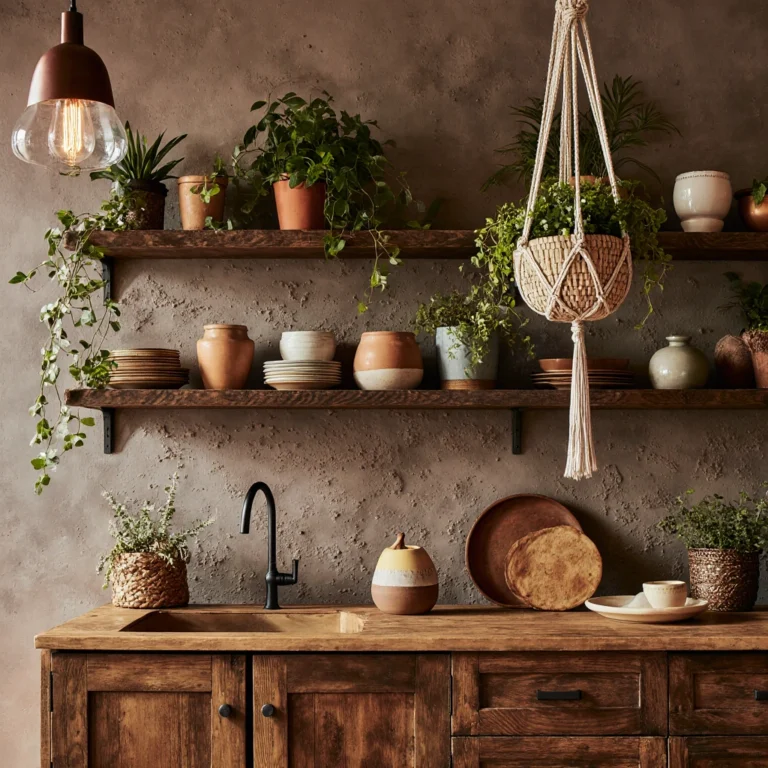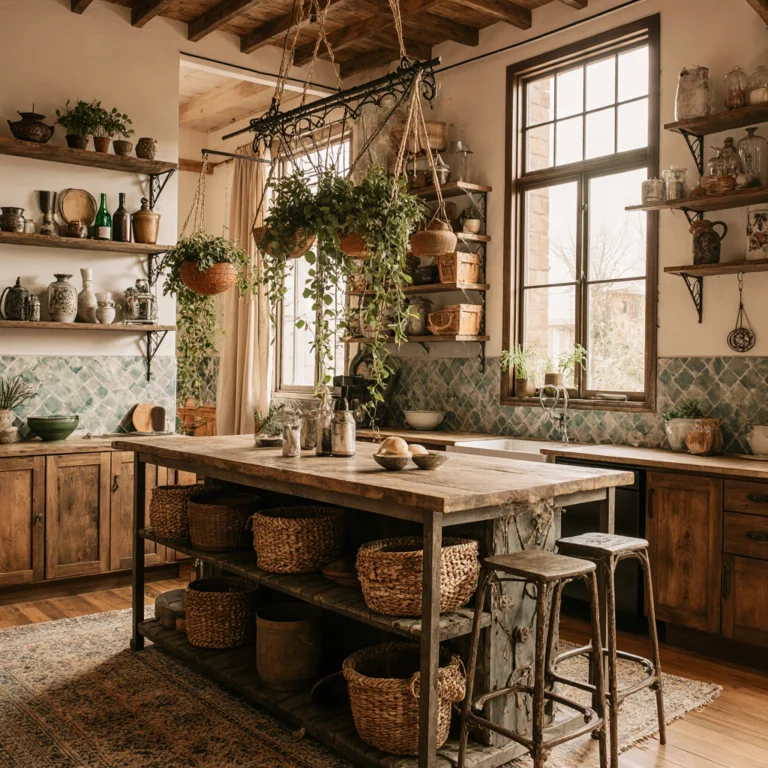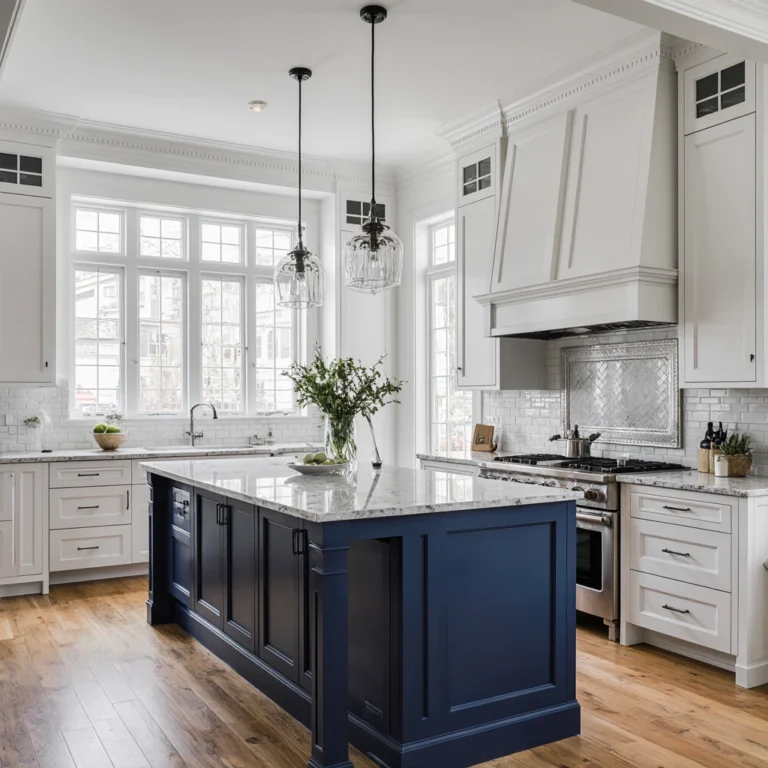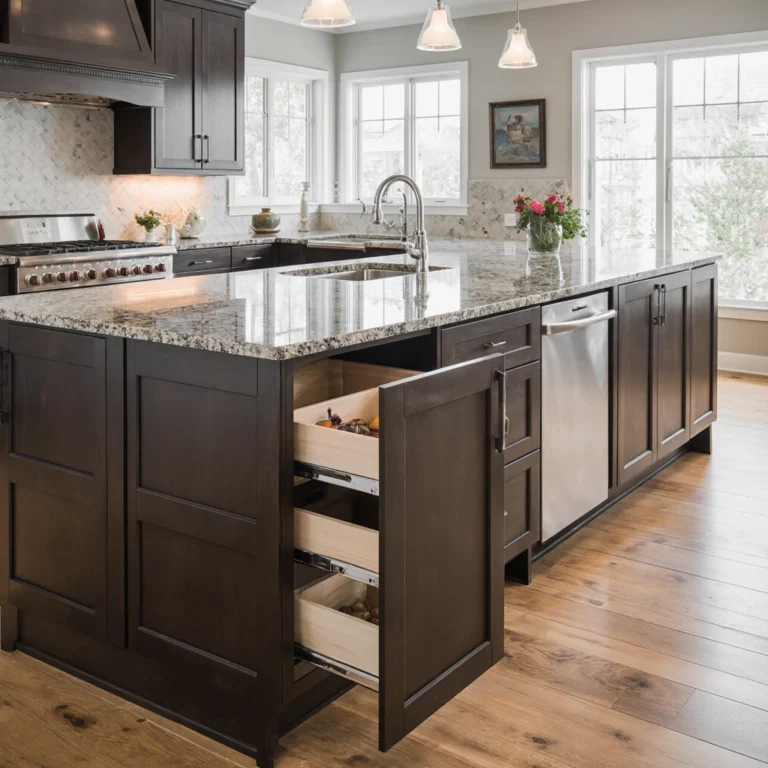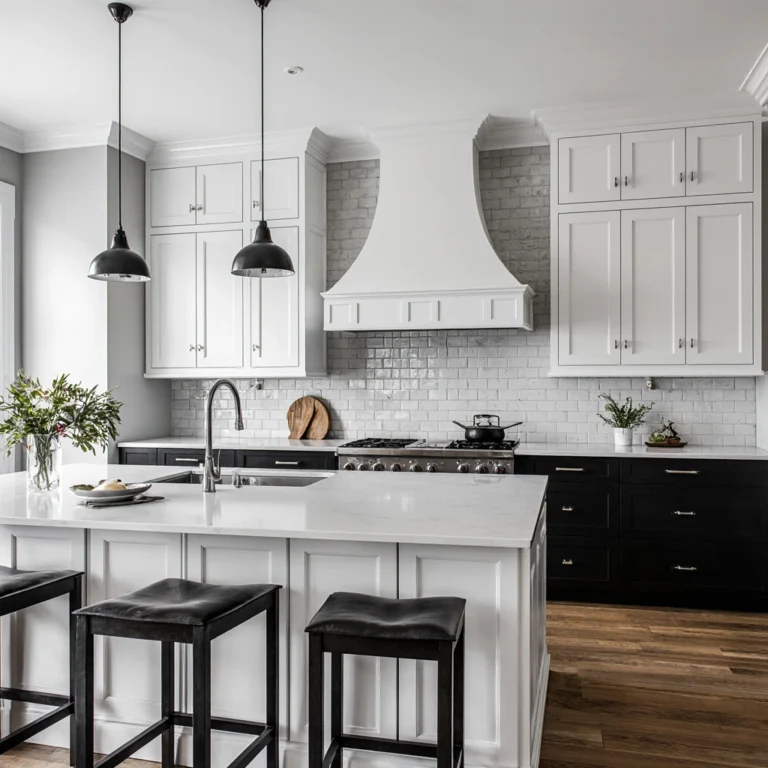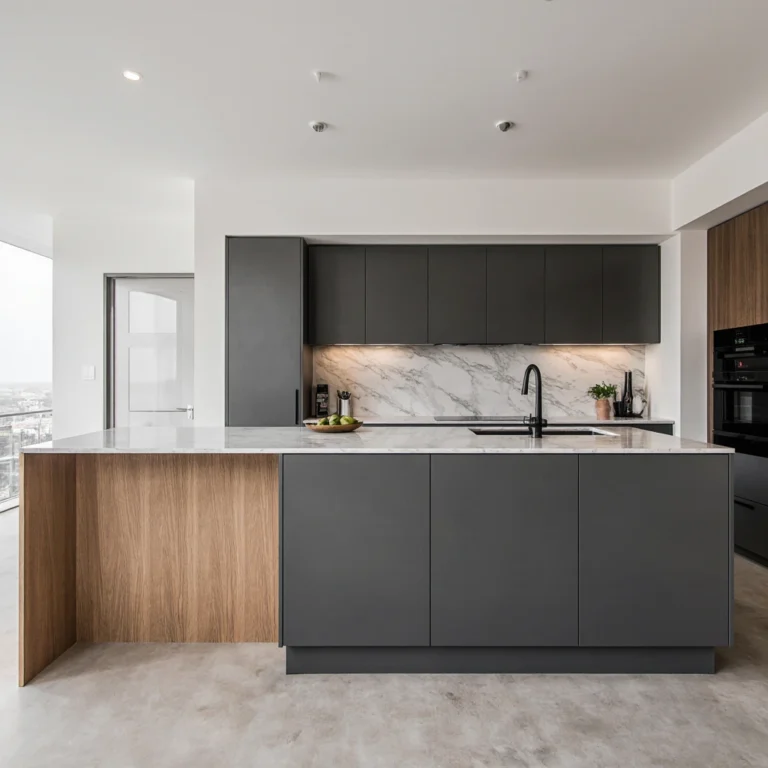Kitchen Accessory Wall: Transform Your Kitchen Design with Smart Storage Solutions
Table of Contents
A well-designed kitchen accessory wall can revolutionize your kitchen space, transforming cluttered countertops into organized, functional spaces that maximize efficiency and beauty. In our modern homes, the kitchen isn’t just for cooking; it’s the heart of family gatherings, entertaining guests, and creating memorable moments. Smart kitchen design, particularly through the careful placement of wall accessories, can maximize your space while creating a stunning visual focal point that reflects your personal style.
The concept of utilizing vertical wall space to organize your kitchen has gained significant popularity among interior designers and homeowners alike. By incorporating thoughtful wall storage solutions, you can create a seamless blend of functionality and beauty, making your daily cooking routine more enjoyable and efficient.
Understanding Kitchen Designs: The Foundation of Great Kitchen Wall Design
Reimagining the Classic Kitchen Triangle
When planning a kitchen accessory wall, understanding your kitchen’s layout is crucial to maximizing its functionality. The traditional kitchen triangle—connecting the sink, stove, and refrigerator—remains, but modern designs expand this concept to include dedicated wall storage areas.
Aisle-in kitchens benefit greatly from wall accessories because they optimize vertical space in tight spaces. Installing magnetic knife strips, spice racks, and hanging cutlery organizers along one wall creates efficient workspace without sacrificing counter space.
L-shaped kitchens offer excellent opportunities for corner wall accessories. Use corner walls for specialized storage solutions such as pot racks, herb gardens, or decorative plate displays that add function and visual appeal to the kitchen.
Wall accessories can be integrated around the perimeter of island kitchens, creating dedicated areas for different cooking activities. Consider installing a coffee station wall with cup hooks, space for coffee pod storage, and a small shelf for brewing equipment.
Choosing the Right Design for Your Space
Recent kitchen design survey data shows that 68% of homeowners prioritize storage solutions when renovating their kitchens. Your kitchen accessory wall should complement your existing design while meeting your specific storage needs.
Consider these factors when planning your wall design:
- Traffic patterns and daily cooking habits
- Available wall space and structural constraints
- Natural light sources and electrical outlet locations
- Integration with existing cabinetry and appliances
- Future expansion possibilities
Smart Storage and Organization: Maximizing Your Wall’s Potential
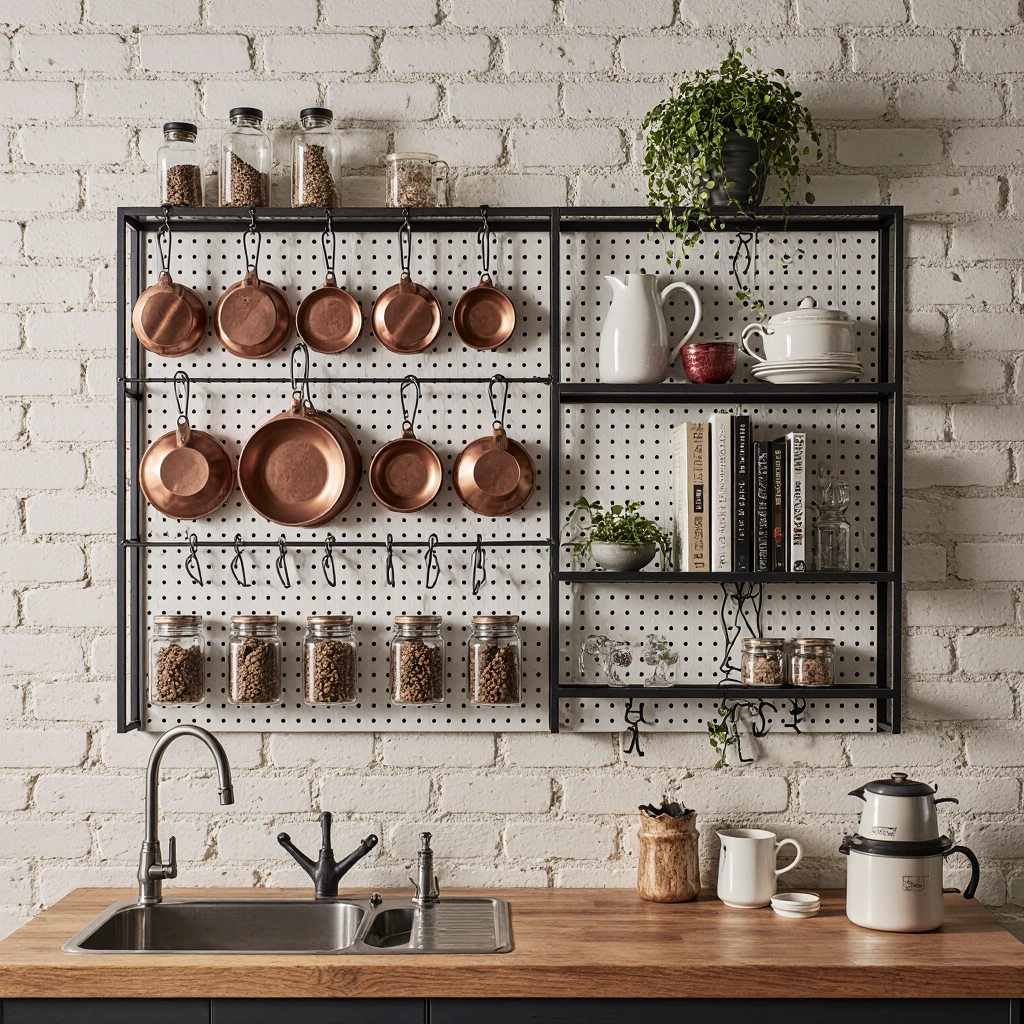
Effective Vertical Storage Solutions
Creating an effective kitchen accessory wall requires strategic thinking about vertical storage opportunities. Modern homeowners are discovering that walls offer untapped potential for organizational solutions that keep essentials within easy reach.
Magnetic storage systems have revolutionized kitchen wall organization. High-quality magnetic strips securely hold knives, spice jars, and small tools while maintaining a sleek, minimalist look. Position these bars at eye level for easy access and visual appeal.
Rod systems with hooks and baskets offer superior flexibility to meet changing storage needs. Install a horizontal rod system that allows you to move hooks, baskets, and small shelves as your cooking habits evolve. This flexibility makes it ideal for storing seasonal ingredients or accommodating new kitchen appliances.
Incorporating open shelving creates opportunities to display beautiful dishes while providing practical storage space. Floating shelves mounted at varying heights accommodate everything from everyday flatware to decorative serving pieces, creating an attractive and functional kitchen accessory wall.
Accessory Categorization and Grouping
Successful wall organization relies on the logical grouping of similar items. Designate specific areas for different cooking activities:
Prep Area Accessories: Install cutting board holders, knife bars, and small tool hooks near your main workspace. This focused approach keeps essential prep tools within easy reach while cooking.
Organize Spices and Seasonings: Dedicate a section of your kitchen tool wall to storing spices using tiered shelves, magnetic containers, or dedicated spice racks. Alphabetized or kitchen-related organization systems help maintain order and reduce cooking time.
Coffee and Beverage Nook: Designate a dedicated wall corner for morning beverage preparation with hooks for mugs, space for coffee pod storage, and a small shelf for brewing equipment. This dedicated area simplifies your morning routine while keeping surfaces clean.
Categorizing and Grouping Accessories
Successful wall organization relies on the logical grouping of similar items. Designate designated areas for different cooking activities:
Prep Area Accessories: Install cutting board holders, knife strips, and small tool hooks near your main workspace. This focused approach keeps essential prep tools within easy reach while cooking.
Spice and Condiment Organization: Dedicate a section of your Kitchen Accessory Wall to storing spices using tiered shelves, magnetic containers, or dedicated spice racks. Alphabetized or kitchen-specific organization systems help maintain order and reduce cooking time.
Coffee and Beverage Nook: Designate a wall area dedicated to preparing morning beverages with hooks for mugs, space for coffee pod storage, and a small shelf for brewing equipment. This dedicated area simplifies your morning routine while keeping surfaces clean.
Color Harmony and Backsplashes
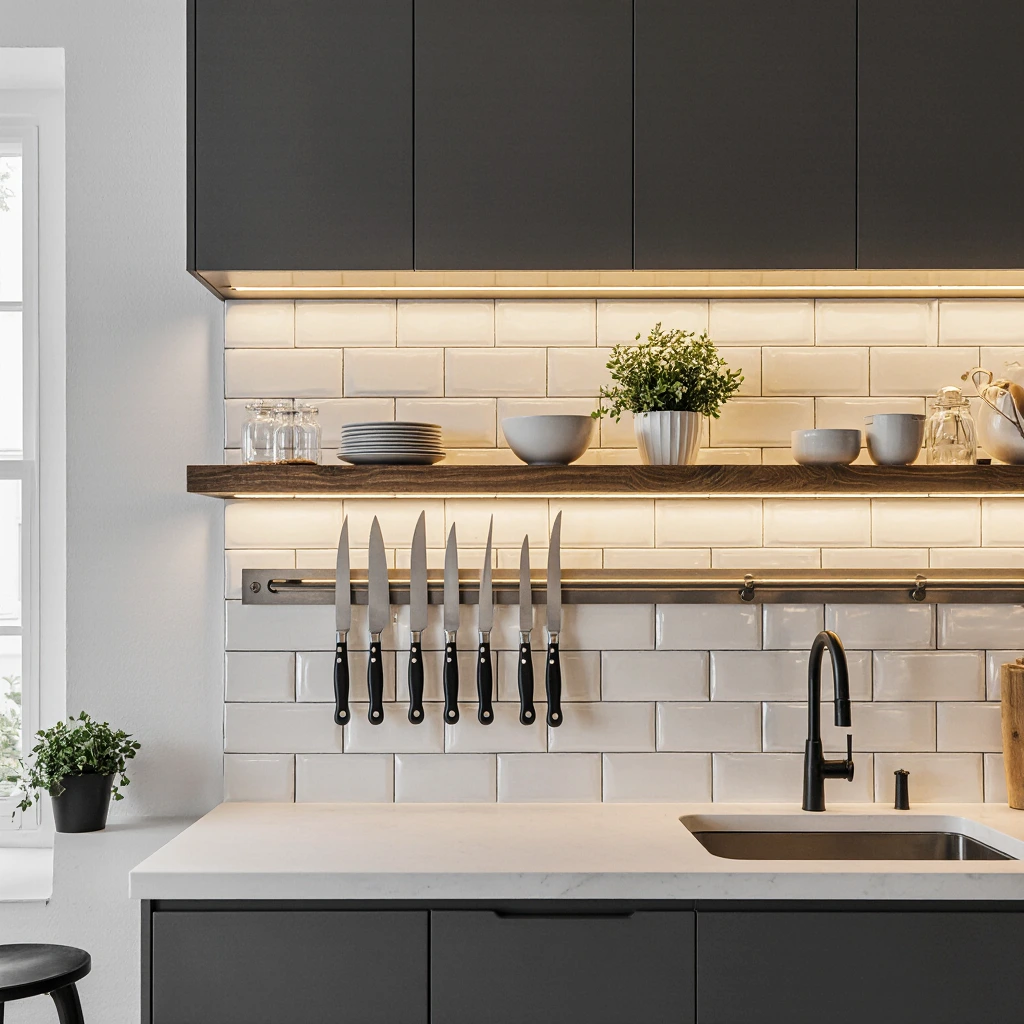
Creating Visual Cohesion
A kitchen accessory wall should blend in with the overall color scheme and backsplash design. Current design trends favor cohesive color palettes that create visual flow throughout the space.
Neutral foundations with bold accents remain popular in kitchen wall designs. Consider using white or light gray as your primary color, then add a personal touch through colorful accessories, cookbooks, or small plants displayed on wall shelves.
Monochromatic sophistication suits homeowners seeking timeless elegance. A kitchen accessory wall done in varying shades of the same color scheme adds depth and interest without overwhelming the space. This approach is particularly suitable for small kitchens, where visual simplicity helps avoid a feeling of crampedness.
Backsplash Strategies
A backsplash provides an excellent foundation for wall accessories. Recent market research indicates that subway tiles, natural stone, and geometric patterns remain the most popular choices for backsplashes, each offering unique opportunities for incorporating accessories.
Subway Tile Compatibility: The sleek lines of subway tiles complement modern backsplash designs beautifully. Install accessories that reflect the rectangular geometry of the tiles, such as linear shelving or horizontal bar systems.
Style of Natural Stone: Stone backsplashes pair perfectly with rustic or industrial backsplashes. Consider using wrought iron pot racks, wooden shelves, or vintage-inspired hooks that complement the organic texture of natural stone.
Geometric Patterns Play: Bold geometric backsplashes benefit from simple backsplashes that don’t compete for visual interest. Clean-lined shelving and simple storage solutions maintain design balance.
Lighting Solutions for Function and Ambiance
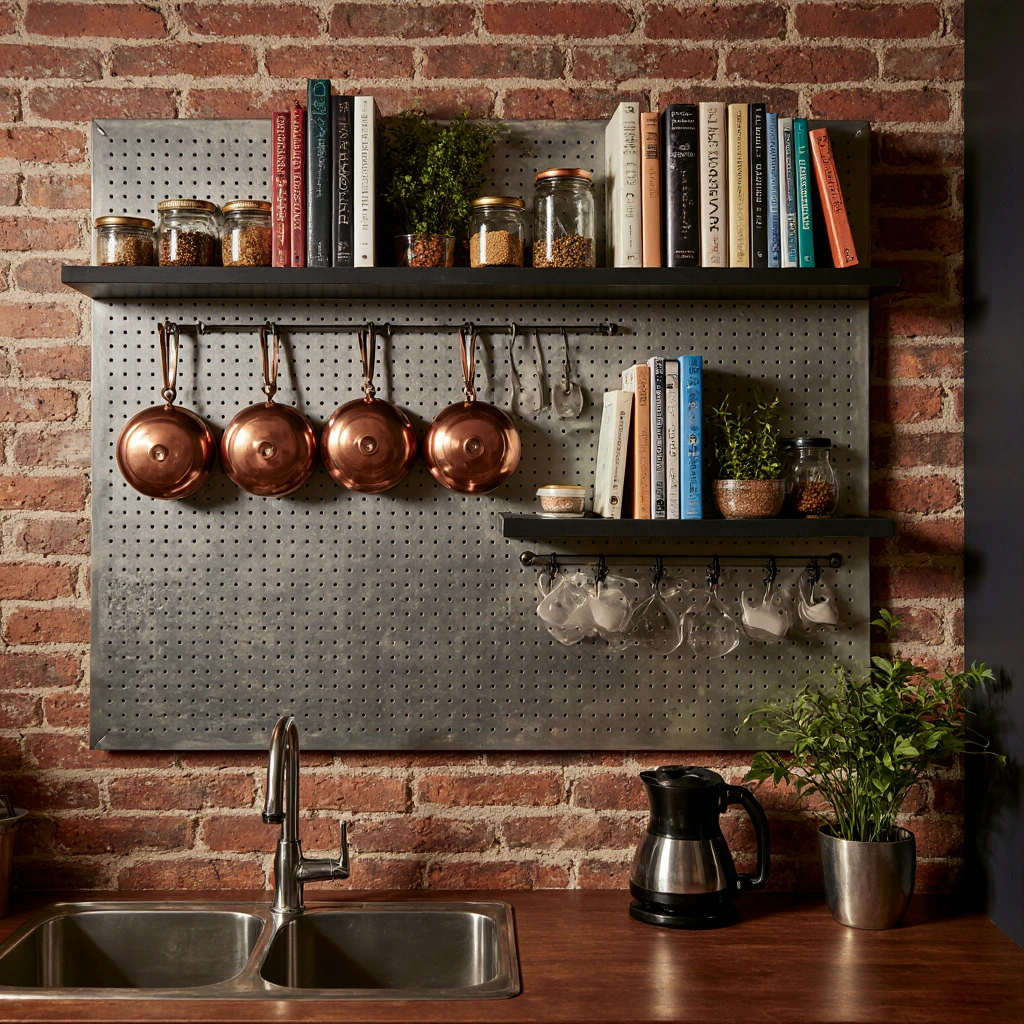
Task Lighting for Backsplashes
The right lighting transforms a backsplash from a functional tool to a stunning statement piece. LED strips under cabinets illuminate wall-mounted storage spaces, making it easier to locate items and adding a warm atmosphere to your kitchen.
Track lighting systems offer flexibility in highlighting different parts of your wall accessories. Adjustable spotlights highlight the beauty of tableware while providing practical illumination for cooking tasks.
Integrated LED solutions within shelving systems create a modern, sophisticated look. These systems provide even light distribution while minimizing visual clutter caused by visible fixtures.
Create a distinctive atmosphere with accent lighting
In addition to their practical function, kitchen accessory wall lighting contributes to a distinctive atmosphere in your kitchen. Warm-colored LED strips create a warm atmosphere for evening cooking, while cooler temperatures provide bright, invigorating light for morning meal prep.
Consider installing dimmer switches that allow you to adjust light levels throughout the day. This flexibility allows you to transition from bright task lighting during food preparation to soft ambient lighting during meals and celebrations.
Affordable Kitchen Design Improvements
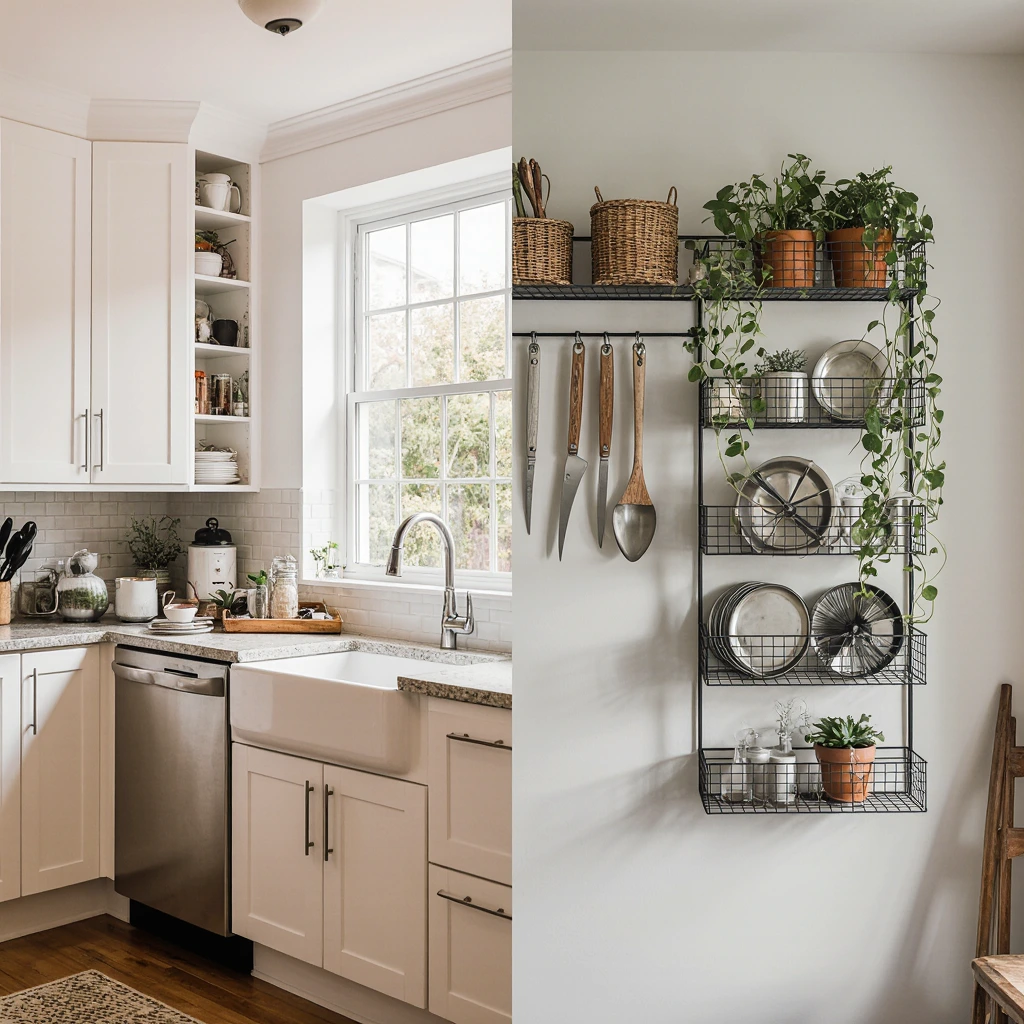
Affordable Wall Transformation Ideas
Creating a stunning kitchen accessory wall doesn’t require a huge budget. Strategic updates dramatically improve function and appearance without breaking the bank.
DIY pegboard solutions offer exceptional value and customization options. A well-designed pegboard wall can meet changing storage needs at a much lower cost than custom cabinetry. Paint the pegboard to match your kitchen’s color scheme for a coordinated, professional look.
Recycled materials can create unique wall storage solutions with character and charm. Old wooden crates become open shelving, while vintage hooks and rods add a touch of character to modern kitchens.
High-Impact, Low-Cost Updates
Focus your budget on changes that deliver maximum visual and functional impact:
Magnetic Knife Strips eliminate bulky knife holders and free up countertop space. High-quality magnetic strips sell for less than $30 but provide years of reliable service.
Floating Shelves provide opportunities to display beautiful dishes, cookbooks, or plants. You can install two or three floating shelves to transform an empty wall into attractive storage space for under $100.
Command Strip Solutions offer temporary and effective storage options, ideal for renters or those experimenting with new design ideas. These removable systems allow for experimentation without requiring permanent wall modifications.
Common Mistakes and How to Avoid Them
Planning Mistakes
Many homeowners make critical mistakes when designing a kitchen accessory wall that can easily be avoided with proper planning.
Not considering weight adequately leads to sagging shelves and potential safety hazards. Always ensure your wall-mounted system can handle the required load, including the weight of the stored items. Use anchors appropriate for the wall type and distribute the weight across multiple anchor points whenever possible.
Poor height planning causes accessibility issues that reduce its effectiveness. Install frequently used items between shoulder and eye level for easy access. Reserve high shelves for light, infrequently used items, and lower spaces for heavier items that need stable support.
Ignoring movement patterns causes wall accessories to interfere with daily kitchen activities. Ensure that open cabinet doors, drawers, and appliances don’t interfere with wall-mounted storage. Maintain clear paths for safe movement throughout your kitchen.
Design and Aesthetic Mistakes
Crowding wall space creates visual clutter rather than organized efficiency. Leave space between accessories and vary the heights and sizes of mounted items to create an aesthetically pleasing effect. Remember that negative space is just as important as storage space in creating an attractive kitchen accessory wall.
Mismatched appliance finishes disrupt the visual harmony of your kitchen design. Choose a cohesive color scheme (brushed nickel, oil-rubbed bronze, or matte black) for all wall accessories to maintain design consistency.
Neglecting accessibility makes cleaning and maintenance difficult. Ensure all wall accessories are easy to clean, and that items stored on shelves can be removed for regular washing.
Integrate Everything: The Perfect Kitchen Accessory Wall
Creating the perfect kitchen accessory wall requires balancing practicality and aesthetics, taking into account your cooking habits and design preferences. The most successful kitchen wall designs evolve over time, adapting to changing needs and growing cookware and accessory collections.
Remember, kitchen wall storage should simplify your cooking routine, not complicate it. Start with the essential items you use daily, then gradually add decorative elements that reflect your personality and enhance the overall look of your kitchen.
Investing in a well-designed kitchen accessory wall pays off in improved cooking efficiency, reduced clutter, and increased enjoyment of your kitchen space. Whether you’re whipping up a quick weeknight dinner or hosting a lavish dinner party, having everything organized and within easy reach makes the entire experience more enjoyable and successful.
Are you ready to revamp your kitchen with a stunning accessory wall? Start by assessing your current storage needs and identifying underutilized wall space. Take photos of your kitchen from different angles to envision potential locations for wall-mounted storage solutions.
Share your kitchen renovation tips and ideas for a kitchen accessory wall in the comments below! What storage solutions work best for your space? Have you discovered any creative wall organization tricks that other readers might find helpful? Your experiences might inspire someone else’s kitchen renovation journey.
Best Amazon Picks :
FAQs
Q: What weight can wall-mounted kitchen accessories typically hold?
A: The weight capacity depends on the wall type and mounting system. Drywall with standard anchors can support 20 to 30 pounds, while studs can support over 50 pounds. For heavy items such as pot racks, always secure them to the studs using proper hardware.
Q: What is the ideal height for installing kitchen wall accessories?
A: Install frequently used items between 48 and 60 inches off the floor (from shoulder level to eye level). Decorative pieces can be placed higher, while heavier items are best placed between 91 and 112 cm for easy access.
Q: What materials are best for kitchen wall accessories?
A: Stainless steel, powder-coated metal, and sealed wood are all moisture-resistant and easy to clean. Avoid materials that cannot withstand the moisture, grease, and temperature changes common in cooking environments.
Q: How often should I rearrange my kitchen accessory wall?
A: Evaluate your wall organization every three months, taking into account seasonal ingredients or new equipment. Clean it thoroughly monthly and rearrange it annually to ensure the system continues to meet your changing cooking needs.
